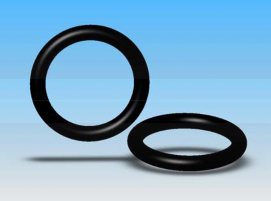Ethylenediamine, 72h at 100° C |
TEST RESULTS |
Hardness Change |
Pts |
-4 |
Tensile Strength Change Elongation at Break Change Volume Change |
%
%
% |
-35
+13
+6 |
Ethanolamine, 72h at 150° C
Hardness Change |
Pts |
-9 |
Tensile Strength Change Elongation at Break Change Volume Change |
%
%
% |
-30
+9
+17 |
NH3 28%, 336h at 100° C
Hardness Change |
Pts |
-3 |
Tensile Strength Change |
% |
-19 |
Elongation at Break Change Volume Change |
%
% |
-16
+4 |
TMAH 25%, 168h at 90° C
Hardness Change |
Pts |
-2 |
Tensile Strength Change |
% |
-2 |
Elongation at Break Change |
% |
-12 |
Volume Change |
% |
0 |
Diglycolamine, 168h at 150° C
Hardness Change |
Pts |
-10 |
Tensile Strength Change Elongation at Break Change Volume Change |
%
%
% |
-35
+11
+20 |
Diglycolamine, 168h at 200° C
Hardness Change |
Pts |
-22 |
Tensile Strength Change Elongation at Break Change Volume Change |
%
%
% |
-62
+3
+39 |
MDEA (N-methyl diethanolamine, 168h at 150° C |
Hardness Change |
Pts |
-2 |
Tensile Strength Change |
% |
-22 |
Elongation at Break Change Volume Change |
%
% |
-2
+2 |
MDEA (N-methyl diethanolamine, 168h at 200° C |
Hardness Change |
Pts |
-5 |
Tensile Strength Change |
% |
-38 |
Elongation at Break Change Volume Change |
%
% |
-6
+8 |
|
|
Dipropylamine, 168h at 150° C
Hardness Change |
Pts |
-4 |
Tensile Strength Change |
% |
-27 |
Elongation at Break Change |
% |
-14 |
Volume Change |
% |
+6 |
Dipropylamine, 168h at 200° C
Hardness Change |
Pts |
-5 |
Tensile Strength Change |
% |
-29 |
Elongation at Break Change |
% |
-10 |
Volume Change |
% |
+7 |
HN0365%, 72h at8O° C
Hardness Change |
Pts |
-5 |
Tensile Strength Change |
% |
-30 |
Elongation at Break Change |
% |
+6 |
Volume Change |
% |
+5 |
Glacial acetic acid, 336h at 100° C
Hardness Change |
Pts |
-5 |
Tensile Strength Change |
% |
-13 |
Elongation at Break Change |
% |
-15 |
Volume Change |
% |
+5 |
Formic acid 85%, 168h at 200° C
Hardness Change |
Pts |
-5 |
Tensile Strength Change |
% |
-14 |
Elongation at Break Change |
% |
-5 |
Volume Change |
% |
+7 |
|



